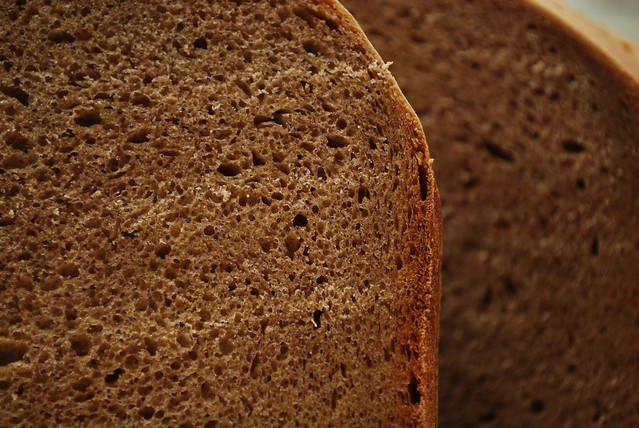 Rye bread is a normal Eastern European bread formula. It's still popular across Russia, Germany and the Baltic state governments. This was generally due to the fact that rye grains were easy to develop in bitter climates and not only grew well on farms but in the wild as well.For this formula we're going to check out a rye bread made out of 100% rye flour. This is the traditional menu used across Eastern Europe due to the fact that rye lawn was hardy and easy to grow in bitter weather, and frequently grew in the open.You should know that rye flour lacks significant amounts of gluten which cause candida to expand and raise a loaf of bread. The effect is that you will wrap up with a very heavy and thick loaf of loaf of bread. It will still have an excellent taste but don't be disappointed if the loaf will not rise and is also very dense. You should also know that rye flour is not gluten free, it simply lacks the same amount of gluten that you find in bakery flour, all-purpose flour, and whole wheat flour.This rye bread recipe can be produced in your loaf of bread machine using the complete wheat setting. When you have a 100% whole wheat setting that's better still. It has a great flavour and works effectively as a groundwork for an appetizer or canape and really should be sliced slender.One extreme caution is that you will find this recipe does not coalesce into a dough ball in your loaf of bread machine like other breads made with more traditional flours. You will have to lift the lid during the early kneading process and motivate the rye dough towards the kneading paddle every once in awhile to form the dough ball. Stay with it throughout the kneading process. If need be, removed the dough ball from the pan and form it into a dough ball with the hands and drop it back to the bread skillet.
Rye bread is a normal Eastern European bread formula. It's still popular across Russia, Germany and the Baltic state governments. This was generally due to the fact that rye grains were easy to develop in bitter climates and not only grew well on farms but in the wild as well.For this formula we're going to check out a rye bread made out of 100% rye flour. This is the traditional menu used across Eastern Europe due to the fact that rye lawn was hardy and easy to grow in bitter weather, and frequently grew in the open.You should know that rye flour lacks significant amounts of gluten which cause candida to expand and raise a loaf of bread. The effect is that you will wrap up with a very heavy and thick loaf of loaf of bread. It will still have an excellent taste but don't be disappointed if the loaf will not rise and is also very dense. You should also know that rye flour is not gluten free, it simply lacks the same amount of gluten that you find in bakery flour, all-purpose flour, and whole wheat flour.This rye bread recipe can be produced in your loaf of bread machine using the complete wheat setting. When you have a 100% whole wheat setting that's better still. It has a great flavour and works effectively as a groundwork for an appetizer or canape and really should be sliced slender.One extreme caution is that you will find this recipe does not coalesce into a dough ball in your loaf of bread machine like other breads made with more traditional flours. You will have to lift the lid during the early kneading process and motivate the rye dough towards the kneading paddle every once in awhile to form the dough ball. Stay with it throughout the kneading process. If need be, removed the dough ball from the pan and form it into a dough ball with the hands and drop it back to the bread skillet.Sliced closeup Dark Rye Bread Alpha + bread machine Flickr Photo Sharing!

German Dark Rye Bread. I love this recipe. I add all the items to the bread maker, ordered from

